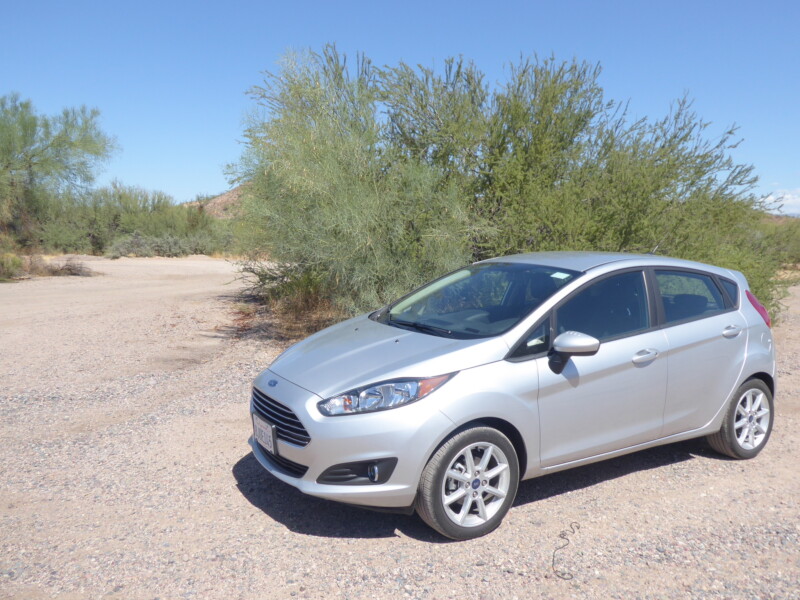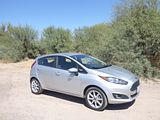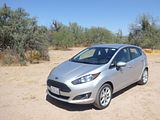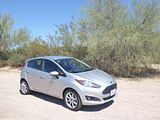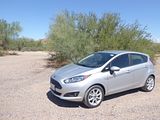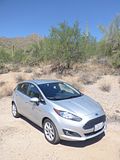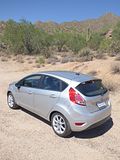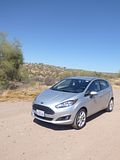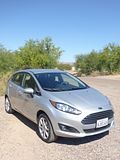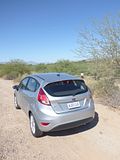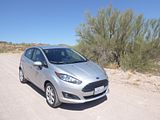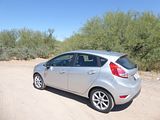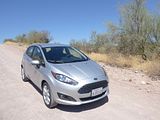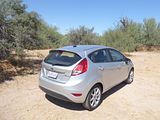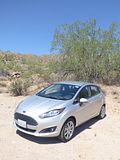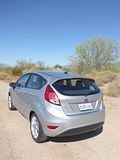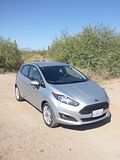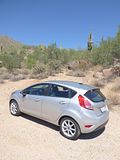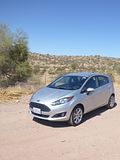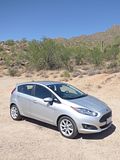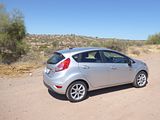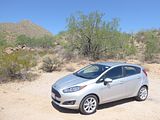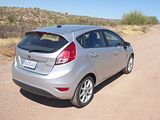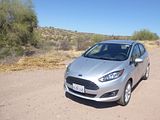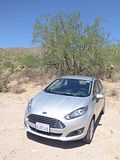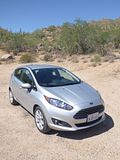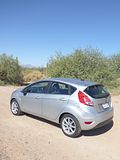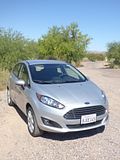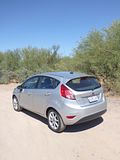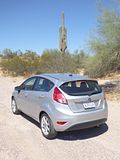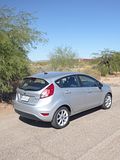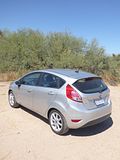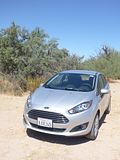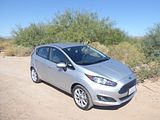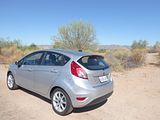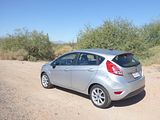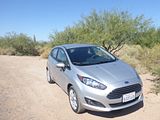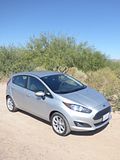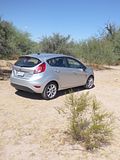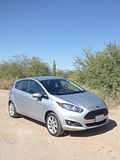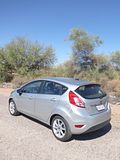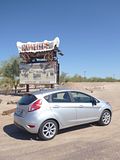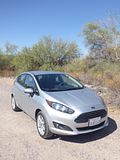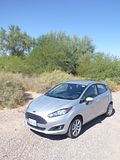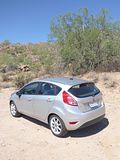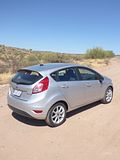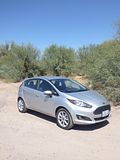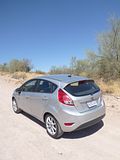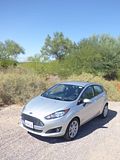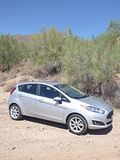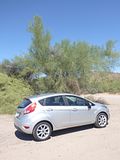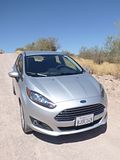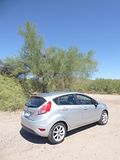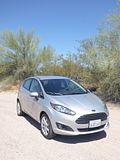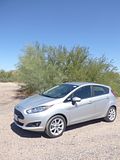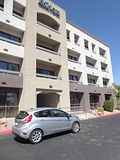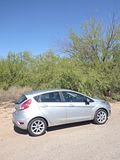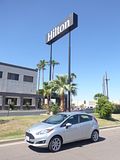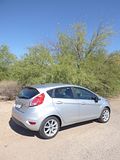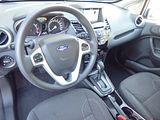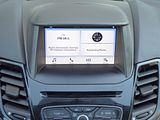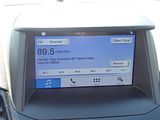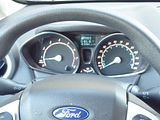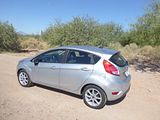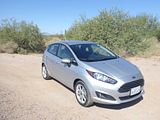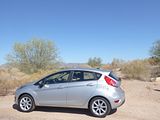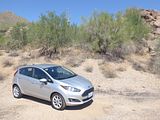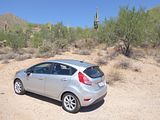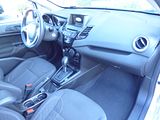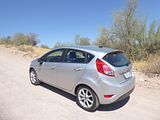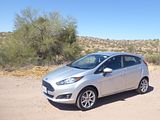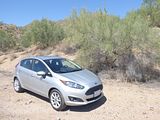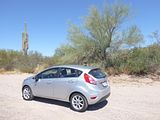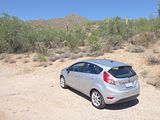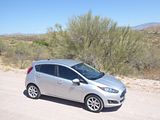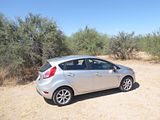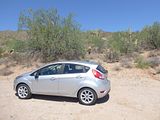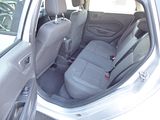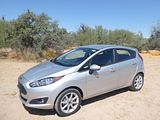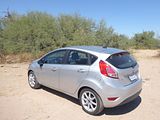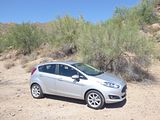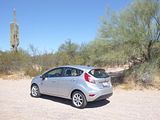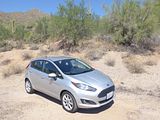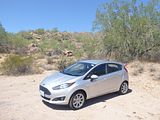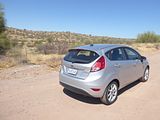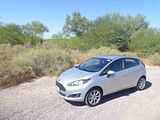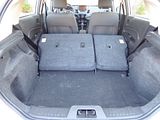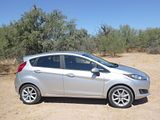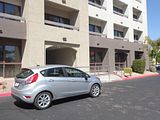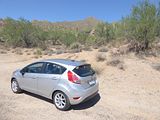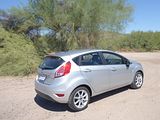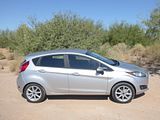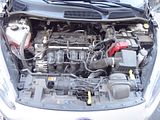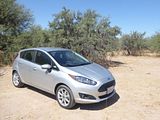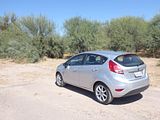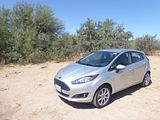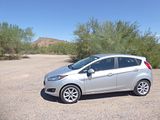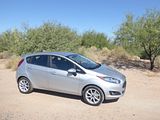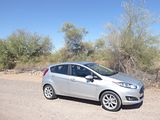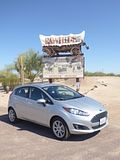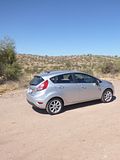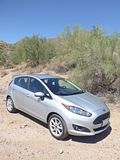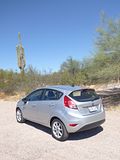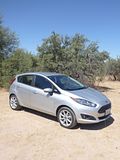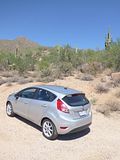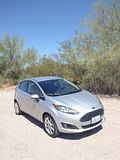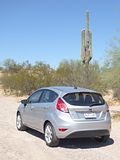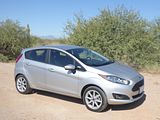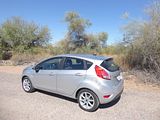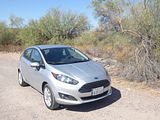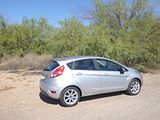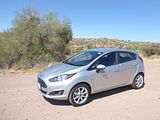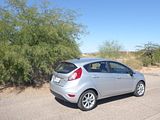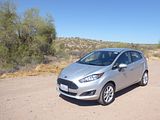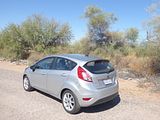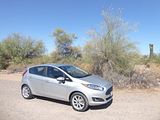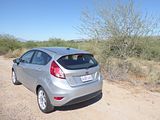After you noted the picture that goes at the top of this article and on this site’s main webpage, you probably saw my caption reading “2019 Ford Fiesta”, and thought there was some mistake. After all, the Fiesta with which Europeans are so familiar was replaced in 2017 with a car which although looking not dissimilar to the model that we first saw in 2008, is different in every detail. But no, there is no mistake. Come to America, and you can buy a Fiesta like that which Europeans think of as the previous generation car, as a 2019 model year vehicle. I can confirm that the plate inside the door declared that this particular one was built in March 2019. In Mexico. 2019 is almost certainly the last model year for this generation Fiesta, and indeed for any Fiesta, as part of the declared policy of switching to an all crossover-based passenger car range, but in the last few months, US market sales have actually increased by around 50%, making the car the second best-seller, beaten only by the commodious but otherwise rather undesirable Nissan Versa. Americans have been able to buy this Fiesta as a five door hatch or as a slightly awkward-looking four door saloon, and until recently it has been the latter which has been evident in the Hertz US fleet. Indeed I sampled one during my March 2018 trip, and was not as impressed by it as I had been by the European versions I had driven some years earlier. I assumed that this would be my sole experience of the model on US soil, but that has proved not to be the case. At the end of a week based out of Phoenix, where every night saw a new low in car availability, I turned up on the final evening to find literally three cars available without a wait. All were Fiesta Hatch models, so the only choice was the colour. Eschewing black and white I picked the one painted in Ingot Silver Metallic and headed back to my hotel.
Although most of the cabin architecture looked very familiar, the distinctive telephone key pad style array of buttons in the centre of the dash was missing here. When I checked with the photos from the 2018 test car, which was also in SE spec, it still had them, so it would appear that Ford did finally rid the Fiesta of something which they tried to claim was on trend (and may be it was back in 2008) with a modern and less cluttered look to the operation of the infotainment system. You do still get what by current standards is a small screen, at just 4.2″, but the operation of it is now a mix of touch sensitive and a lesser set of buttons and knobs beneath it. The Ford Sync system here is fairly basic in operation, with only an AM/FM radio, various car settings and the display screen for the now mandatory rear-view camera, though there is still a CD slot, which is beneath the screen. The rest of the dash is much as I remembered, comprised mainly of rather hard black plastics. Gloss black inlays are used in the centre and I found that these caught the sun and created stray reflections and sun spots which were irksome. There is a fairly chunky plastic-moulded steering wheel which was not unpleasant to hold. There are two instruments set in individual and deeply dished cowls, for revs and speed, with Ford’s characteristic turquoise pointers. A small bar chart for fuel level sits between them, and above this is a simple area used for the odometer and trip mileage info, which you cycle through by pressing the end of the left hand column stalk. The steering wheel spokes contain repeaters for the audio system and cruise control. Two indicator stalks are for indicators and wipers with lights operated by a rotary dial on the dash to the left of the wheel. Air conditioning selections are made using the rotary dials in the lower centre of the dash. It’s not the last word for luxury or quality, but it is all very easy to use and functional.
Before setting off, I had to get comfortable. As you might expect, seat adjustment is manual, with a bar under the cushion for fore/aft movement and levers on the side for backrest rake and seat height, though the driver gets this latter feature. The wheel does telescope in/out as well as up/down and the seat belts had a height adjustment on them, so it was not hard to get everything set the way I wanted. The seats are trimmed in cloth and were predominantly black in the test car, though there was lots of white stitching as part of the pattern to add a little variety to the appearance.
Rear seat space is reasonable for a small car. With the front seats set well forward, for my driving position, then leg room is quite acceptable, but position them towards the rear of their travel and there is not a lot of space left at all. The floor is almost flat, but it will be overall width, or rather lack of it, which means that three adults would struggle to squeeze in, though there should be enough space for children. Headroom is only going to be an issue for the very tall. Oddments space is limited to a single map pocket on the back of the passenger seat. There are no bins on the doors, but there is a single cupholder and small oddments recess moulded into a unit which is attached the rear of the centre console unit.
As this was the last car of the Phoenix part of the trip, it meant that I had to use the boot for my luggage. The suitcase had to go in widthways, as the available space is not long enough for it to go in any other way, but it was clear that another similar sized bag could have gone in with it and there was still space on top, under the rear parcel shelf, so the boot is more accommodating than you might think. Official figures suggest it is larger than that of the saloon. There is quite a high lip over which you have to lift things, though. More space is created by dropping the rear seat backrests down. They simply sit on the seat cushions and the result is a far from flat load area, so whilst it is usefully longer, it could be better if the cushions pulled up and out of the way. Inside the cabin, there is a modest glovebox, there are bins on the front doors, and a small lipped area in front of the gearlever as well as a cubby under the central armrest.
As I accelerated away from the lights coming out of the rental car centre, there was a slightly throaty sound to the engine, and I did wonder whether this model now had the highly-rated three cylinder Ecoboost engine under the bonnet. My ears had told me four cylinders, though and sure enough when I got back to the hotel and checked, that is how many were there. In fact, all US market Fiestas get the 1.6 litre 4 cylinder unit, which is good for 120 bhp. In rental car spec it comes coupled to a six speed automatic gearbox. This is the same combination as was in that 2018 test car, and it did not impress me unduly then. This time, though, things seemed rather better. This is a small and relatively light car, so 120 bhp is sufficient to endow the Fiesta with quite lively performance, and even when I took it up the Beeline, route 87 towards Payson, where there are long and moderately steep inclines, it acquitted itself well. In every day traffic, the Fiesta feels like the sort of car you can point and squirt at gaps in the traffic, with ample acceleration to keep up with the flow and on the hills, although the gearbox would help you out by selecting a lower ratio, it was also generally unfazed. The engine is smooth and noise levels are well suppressed. There seemed not be much interference from wind or road noise sources, either. I only drove this Fiesta 116 miles, and before returning it I had to put in 4.38 gallons before the pump cut out, which would suggest rather disappointing economy. I am sure that this means that the car was not really that full when I got it, as the trip computer declared that I had averaged 32.9 mpg (US), which would seem to be about what you would expect.
It was the other driving characteristics of this generation Fiesta which brought it such critical acclaim in Europe. Recalibration for the US market means that it is not quite so good but still rates among the best of its rivals. It is the steering which seems to have changed the most. Gone is the real precision that so delighted, and now this is merely good, with an appropriate level of assistance to give plenty of feel, but lacking the final few degrees of polish that so distinguished the European spec cars. The handling remains a delight, with lots of grip and the feeling that you can throw the Fiesta at bends faster than you tackle them in many other cars, knowing you will not get into trouble. Actually, the relative lack of power here would be the ultimate limitation. There is no penalty in the ride, either. US market Fiesta models come on 195/60 R16 inch wheels, and the car coped well with the various surfaces on which it was tested. There were no surprises from the brakes. A conventional pull-up handbrake, fitted between the seats, features on this car. All round visibility is good, with the both door mirrors incorporating the second piece of glass in the upper corner to help out with blind spots. Judging the back end proved easy, as it is not far away, but the rear-view camera put paid to any doubts as to how close obstacles were.
There are two distinct body styles and several different trim levels offered. The four-door sedan comes in two trim levels: S and SE, both powered by the 120 bhp four-cylinder engine and a five-speed manual transmission, with the six-speed automatic also available. The five-door hatchback model is offered in three trims: SE, ST-Line, and ST. The two entry-level hatchback trims mirror the sedan’s powertrain setup. The sporty ST comes with a more powerful engine, along with performance-tuned brake and suspension systems. The base model in this lineup is the Fiesta S sedan. With prices starting at $14,260, this four-door includes manual windows, keyless entry, and a rearview camera. It features the SYNC infotainment system with a 4.2-inch display, voice activation, a USB port, and Bluetooth. The Fiesta SE trim level doubles as the top sedan trim ($15,490) and the entry-level hatchback model ($15,790). Key features of this trim are power windows, cruise control, and Ford MyKey. This system has extra seat belt reminders, an earlier-than-normal “low-fuel level” warning, and it lets you set limits on the vehicle’s speed and audio volume. New for 2019 is the Fiesta ST-Line, which starts at $17,625 and pairs the base engine with a sportier appearance through Shadow Black exterior accents, cloth sport seats, race-inspired aluminium pedals, and a leather-wrapped steering wheel with red accent stitching. Standard features include a keyless entry keypad, ambient lighting, and the upgraded SYNC3 infotainment system with an added USB port, Apple CarPlay, Android Auto, and satellite radio. The Fiesta ST is the performance-oriented edition and has a starting price of $21,340. It boasts a 197 bhp EcoBoost engine, a six-speed manual transmission, a sport-tuned suspension system, and high-performance brakes. Other noteworthy features include automatic climate control, a proximity key, push-button start, and added manual adjustments for the driver and front passenger seats.
It was only late in the test that I spotted that Hertz categorise the Fiesta Hatch as a Group A car, the very cheapest that they have on offer, and a group lower than the Sedan model. This helped to explain why suddenly there do seem to be quite a few of the Hatch model in the fleet, as in the past the entriest of entry level rental cars was a position filled by the Toyota Yaris. I endured one of these back in April 2018 and it really was not pleasant, with the bare bones spec further compounding the misery of the rest of the car. But for 2019, there is no Yaris hatch in America (a Mazda 2 based model will return for 2020) and so Hertz have sourced something else. Something which despite being an even older design, is a much more pleasant product. For sure, this design of Fiesta is now over 10 years old, but there have been just enough updates to avoid it feeling that way and of course it was an excellent car when it first came out. So although I would hope you are never faced with the rental car lack of availability that I was, if you want a cheap rental car and are not going great distances with a lot of people and luggage then the 2019 Fiesta still has plenty to commend it.

